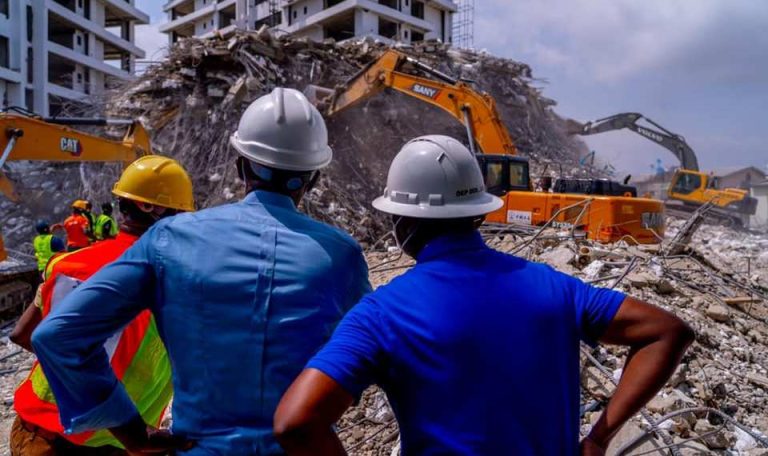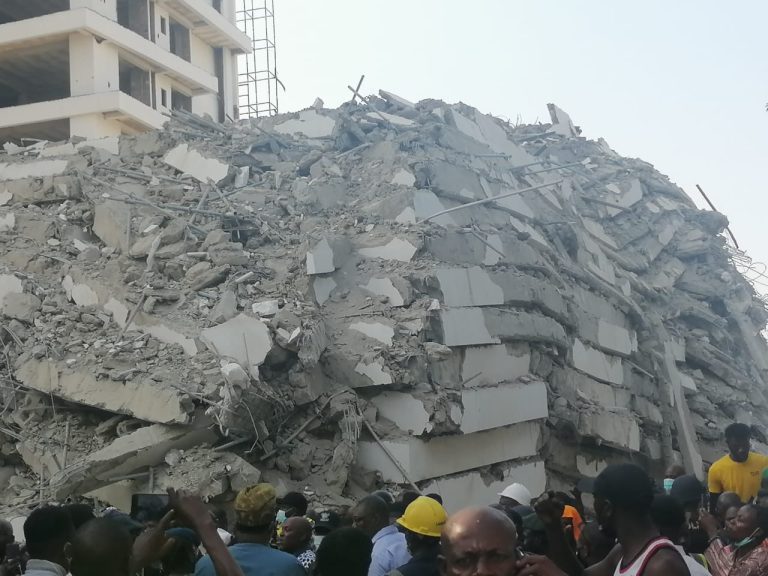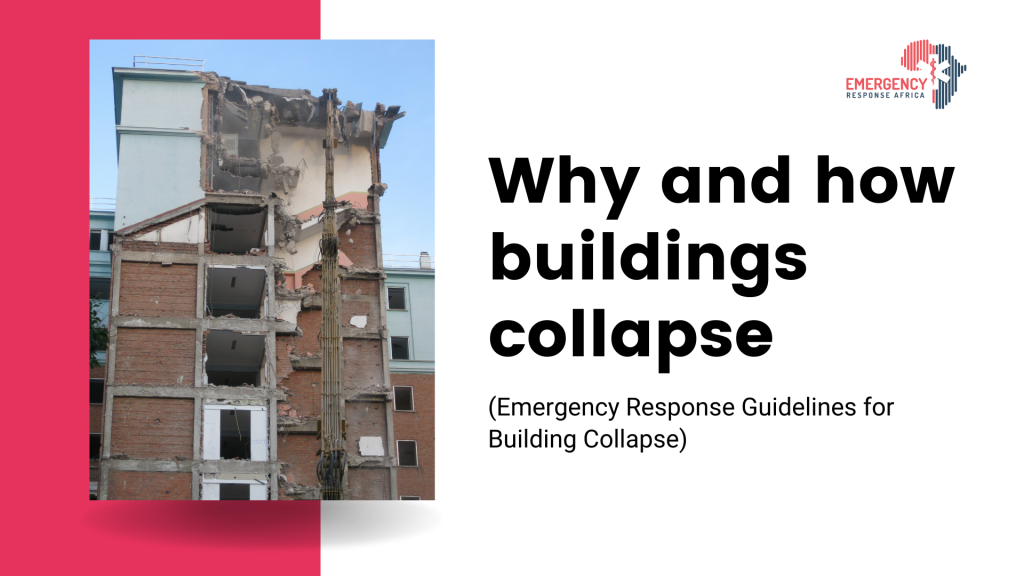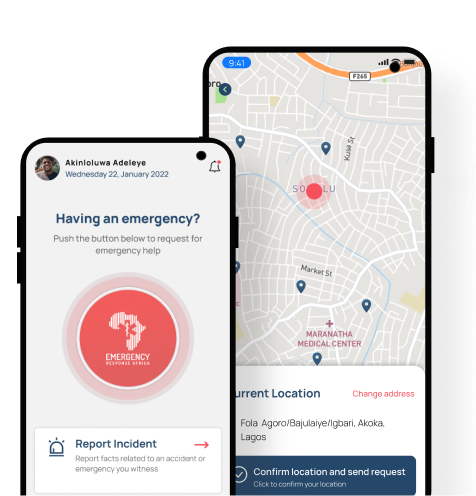Only 15 people have survived, with 44 people found dead, in another deadly building collapse that has caused outrage in Nigeria and calls for recriminations against government and regulatory authorities.
The activities of unskilled craftsmen in the building industry have smeared the image of the building profession in the recent past leading to questions like why and how do buildings collapse in Lagos?
Why and How do buildings collapse in Lagos?
It is a simple fact that the hazards during building construction are a great concern, complex, difficult to observe and evaluate.
Depending on the type and complexity of the structure, The causes of structural failure in Nigeria are numerous and complex yet they are 5 general reasons that answer the why and how buildings collapse in Lagos. These include:
- The inability of the engineer to carry out proper site investigations,
- inability to calculate design loads accurately,
- inability to prevent the use of substandard building materials,
- inability of the engineers / planning authority to have good design layout and
- inability of the engineers to understand structural analysis and design principles .
The foundations are too weak
Looking at why and how buildings collapse in Lagos starts with the foundation i.e its strength.
Adequate foundations can be costly. (They can cost up to half the price of a building).
Three things are considered when building foundations – the solidity of the soil, the heaviness and content of the building. Lagos, possessing swampy ground, requires strong foundations. Far stronger than solid ground. But developers build weak ones on swampy grounds just to save cost. Many buildings thus collapse as a result. Even on solid ground, foundations need to be strong enough for the load.
Poor Structural Design
These are not only errors of computation, but a failure to take into account the loads the structure will support, erroneous theories, reliance on inaccurate data, ignorance of the effects of repeated or impulsive stresses, and improper choice of materials or misunderstanding of their properties.
At the design stage the engineer is responsible for these failures!
At MO&A, before the structural design is concluded, there are different stages of Quality Assurance and Quality Control QA/QC reviews through the Concept/Preliminary Design stage, the Design Development stage, and the Construction Documentation stage. Peer reviews of the design are dutifully and diligently conducted, and a formal sign-off is generated at the completion of each gate review.
Poor compliance with engineering drawings and specifications
When structural drawings and specifications are not judiciously followed during construction, it is detrimental to the life of the structure.
To avert the threat of collapse, it is important that the engineer produces explicit, clearly documented and easy to understand details of drawings which should also be made promptly available to the contractor whenever needed.
Use of sub‐standard building material
To avoid the use of substandard material, samples of materials to be used for construction should be subjected to compliance tests, viz chemical, strength, composition, etc., to ascertain their integrity.
For example, aggregates to be used for construction should be checked for contaminants like chloride and other impurities. To prevent retardation of compressive strength of concrete, no material with chloride should be used. Also, steel reinforcement should be tested for compliance with standards regarding its tensile strength and ductility.
Illegal conversion/alteration/addition to existing structure
The illegal conversion of an existing structure for uses other than the original design intention and use.
For example, a building that was originally designed to bear three floors and later converted to bear two additional floors, without consulting a structural engineer, may collapse due to overload and consequent over stress of the foundation. The foundation may have been designed to bear only three floors without taking future expansion into consideration.
It is pertinent to note that it is the duty of the Structural Engineer to certify the structural integrity of a structure, especially when it comes to changing its use.
Corruption
How do buildings collapse in Lagos is no surprise when corruption is taken into consideration.
Sometimes drawings and specifications are not effectively or adequately reviewed by authorizing officers in the chain of approval grants. Corrupt practices tend to be one of the undermining factors in such regard.
Natural disaster
In Nigeria, the most common natural events are heavy winds, rain storms, floods, earth tremors, etc. Unanticipated impact loading from these different causes, and the erosion from flooding have been recorded as contributory natural causes.
Poor construction
This arises when contractors fail to carry out work in accordance with the Consultants’ specifications. It is commonly believed that they do so to further maximize profit, with often fatal consequences. Sometimes specified materials are substituted with sub-substandard ones. Other areas of concern include poor concrete mixes, premature removal of formworks and general poor workmanship.
Poor Maintenance
Buildings begin to deteriorate from the time they are completed and need timely maintenance to remain in good condition.
A process of gradual deterioration is unavoidable. But the speed at which it progresses can be reduced through proper and timely maintenance. Poor building maintenance can cause weakening of the building structure.
Lack of genuine geotechnical information about the underlying soil
Reputable Geotechnical expert are not conducted for soil testing.
This is because the structural engineer will solely rely on this result to design the suitable foundation based on the recommendation of the geotechnical engineer.
Even an excellently designed and constructed structure will not stand on a faulty foundation. Although the structure may bear the loads, the earth beneath may not. The displacement due to faulty foundations may alter the stress distribution significantly.
The load is heavier than expected
A building collapses when the load is beyond the strength of the building.
Even if the foundations and the materials are strong enough for what they were originally built for, that purpose may change.If a building was designed to be a home and is then turned into a library where boxes and boxes of books are piled up, the building may strain under the weight.
Another reason why the load is often heavier than the original design is because extra storeys are added. This is the case of an upmarket apartment block which had more storeys than planned collapsed in Lagos, killing 34 people in March 2016.

Image Source: Premium Times
Emergency Response Guidelines Building Collapses
- Report a collapse: if you see any signs of collapse shout loudly or press the alarm bell to let people know and evacuate. Don’t hesitate to call the Lagos State Building Control Agency to inform them of the location of the building with signs of collapse.
- Call an ambulance: Call a reliable ambulance service if you witness a building collapse or you are trapped in one. You can stay ahead of this mishap by saving our toll free number now.
Collapse signs: Here are six building collapse signs to take note of:
- When the bottom of the building cracks or sink
- When windows or doors are twisted and difficult to open and close
- When the columns rise
- When there are web-shaped cracks on the columns or suddenly sagging floors
- When you smell gas or there is a smoky or acrid smell as suddenly the wind blows within the building
- When an explosion or a loud cracking is continuously heard
If you ever find yourself inside a Collapsed Building take any of these steps:
- Evacuate to a safe place with firm walls.
- Find a way out of the building and help When windows or doors are twisted and difficult to open and close the wounded, the sick, the elderly, and pregnant women evacuate first.
- Evacuate promptly in an orderly manner while protecting your head from falling objects.
- Avoid removing obstacles on the move, and be prepared for further collapses as you evacuate.
- Stay in a safe place, and do not use broken stairs or elevators.
- Use a flashlight (possibly from your phone) instead of a match or a lighter to avoid an explosion in case of a gas leak.
- If you find yourself trapped in collapsed structures, take these precautions
- Do not use up your energy doing unnecessary actions or yelling.
- Cover your nose and mouth with clothing or cloth to minimize dust inhalation.
- Regularly knock on walls and pipes to call for help.
- Turn your mobile phone on for short periods of time to conserve the battery because its radio waves help trace people trapped in a collapsed building.
- Find food and water, and maintain your body temperature in the hope of a rescue.
The rate at which structures in Lagos are collapsing is a great source of concern.
Year-in year-out, building collapse is now a recurring phenomenon in Lagos, resulting in loss of lives and billions of Naira in investments.
The collapse of the 21-storey high-end apartment block, which killed the owner of the real estate development along with scores of construction workers and laborers, has fueled anger and a renewed focus on potentially deadly malpractices and alleged corruption within Lagos’s booming property development industry.
This is followed by the collapse of another storey-building in the Lekki-Ajah axis of the state the next day. This collapse no surprise brought to the fore, again, the recurring, but the disturbing issue of why and how do buildings collapse in Lagos.

Image Source: Premium Times




I was wondering if you ever thought of changing the page
layout of your website? Its very well written; I love what youve got to say.
But maybe you could a little more in the way of content
so people could connect with it better. Youve got an awful lot of
text for only having one or two images. Maybe you
could space it out better?
I was recommended this website by means of my cousin. I’m not
certain whether this post is written by way of him as nobody else recognize such distinctive approximately my difficulty.
You’re incredible! Thank you!